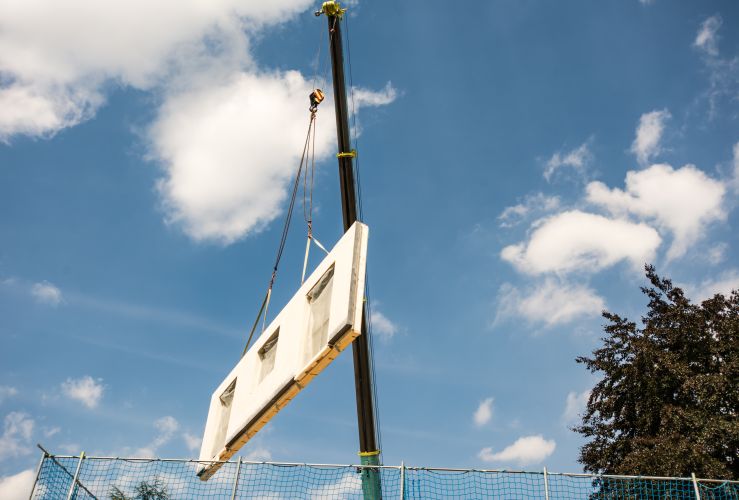
The UK's housing crisis is well-publicised, with too few homes being built and demand soaring. How to spur the construction industry into bolder action has been a bone of contention for years.
Labour and skills shortages - which could well get worse post-Brexit - are a severe bug-bear, while the nation's construction industry has been further damaged by the collapse of Carillion, the UK's second biggest construction firm before its demise.
Improving the industry’s ability to build more homes - faster and cheaper - may seem like a distant dream.
The emergence of modular construction, however, has been hailed by some as a way to increase productivity while lowering costs. Rather than traditional on-site construction using bricks and concrete, modular construction involves components being made in a factory, shipped to a building site, then assembled.
The approach could be a shot in the arm for the construction of domestic properties, but it could also be used to construct public buildings like schools, hospitals and prisons. The buildings look very similar to regular ones, but can be built faster and cheaper.
Already, the process has won admirers in the cabinet. The Chancellor, Phillip Hammond, stated in his Autumn Budget that the government would use its purchasing power to drive adoption of the technique by 2019 - through all relevant departments.
The nation's big players are on board with the process, with Mace, Laing O’Rourke, Mott MacDonald, Kier, NG Bailey, Sverfield and Arup making clear their support for the so-called 'design for manufacture' approach.
Some say it could be the biggest transformation of UK construction techniques in a century - in a sector that badly needs change. The industry has been criticised for slow adoption of new technologies and processes, such as building information modelling (BIM).
At present, 190,000 new homes are built annually in the UK, well below the government target of 300,000. Many mainland European countries are embracing modular construction, while of Japan's one million new homes each year, 15% use prefabricated components to some degree.
Kenny Ingram, global industry director for IFS, outlined the benefits of the modular approach: “The market is now catching up. There are benefits to building modular homes, 50 per cent reduction in time, lower labour costs, less materials, which means lower overall costs. There are now quite a few factories where these modular homes can be built.”
However, such processes require large initial investments, and many construction firms have not developed long-term strategies for off-site construction.
There is hope that pressure from the government, combined with a spark of entrepreneurialism from privately-owned construction companies, could spur the industry in this promising direction. Indeed, it may one of the only ways the housing crisis is prevented from becoming much worse.




